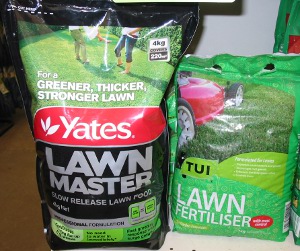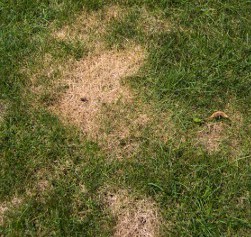|
When planning to sow a new lawn, evaluate what the lawn is used for and what environmental conditions it is exposed to. We have purpose designed lawn seed for shady areas, easy care lawn, hard wearing lawns and a super fine seed for the lush soft lawn.
Getting Started
Good soil preparation is the key to achieving a good lawn.
- Spray out weeds with a weed killer such as Roundup
- Allow 10-14 days for weeds to die and brown off
- Soil should be dug to a depth of 15cm - break up large clods and remove all stones and debris.
- Well -drained, loam soils are best
- If soil is clay or very heavy, apply Gypsum and work in some sandy soil
- In very wet conditions, artificial drainage may be necessary
- If soil is sandy and free draining, add compost, peat to improve its water holding ability
- Rake and level, filling in hollows and removing high spots
- Slope lawn away from house and other buildings
- Tread and rake the area several times to consolidate and stop further sinking
- Apply Lawn Fertiliser to area prior to sowing.
- Alternatively use a slow release lawn food such as Lawn Builder
Sowing
- Sow in calm weather
- Sow in early morning
- Mixing seed with some sand helps even spread
- Sow seeds in two directions, walking backwards across lawn, North -South, East - West
- Ensure even coverage - avoid dumping seed in patches
- Sow at recommended rate on packet.
- Keep surface moist with light watering until seeds germinate, ie. at least daily
- As seed grows water more heavily but less frequently, i.e. every 2 days
Mowing
- Mow frequently for best results
- Avoid cutting too low or ‘scalping’
- Cutting height between 2.5 -4cm is ideal
Feeding
- Once grass is established, feed with Lawn Food in spring and autumn
- Never fertilise in dry conditions
Lawn Protection
The worst enemies of good lawn are Porina and Grass Grub, and the invasion of broadleaf weeds.
Grass Grub
- Feed on roots
- Yellow patches and stunted lawn growth
- Birds are usually pecking in these areas as they feed on the grubs
- Adult beetles feed on foliage in garden in November
- Grub appears autumn, early winter
- Apply Soil Insect Killer in Autumn and Spring.
Red Thread Fungus
- Apply Yates Green Guard at recommended rate.
Weeds
The best way to deal to weeds is to create a competitive lawn by not mowing to low. When you mow to low and greate bare batches, weeds quickly move in and start to take over.
- Broadleaf weeds
Apply Turfix - spring and autumn
- Onehunga weed
Apply Yates Prickle Weed Killer - Sept to November
Paspalum is a nusiance in the lawn and unfortunately there is no spray that will destroy this weed without also destroying your lawn. The best approach is to spot spray in summer using Round Up or dig out.
|
|
        |








